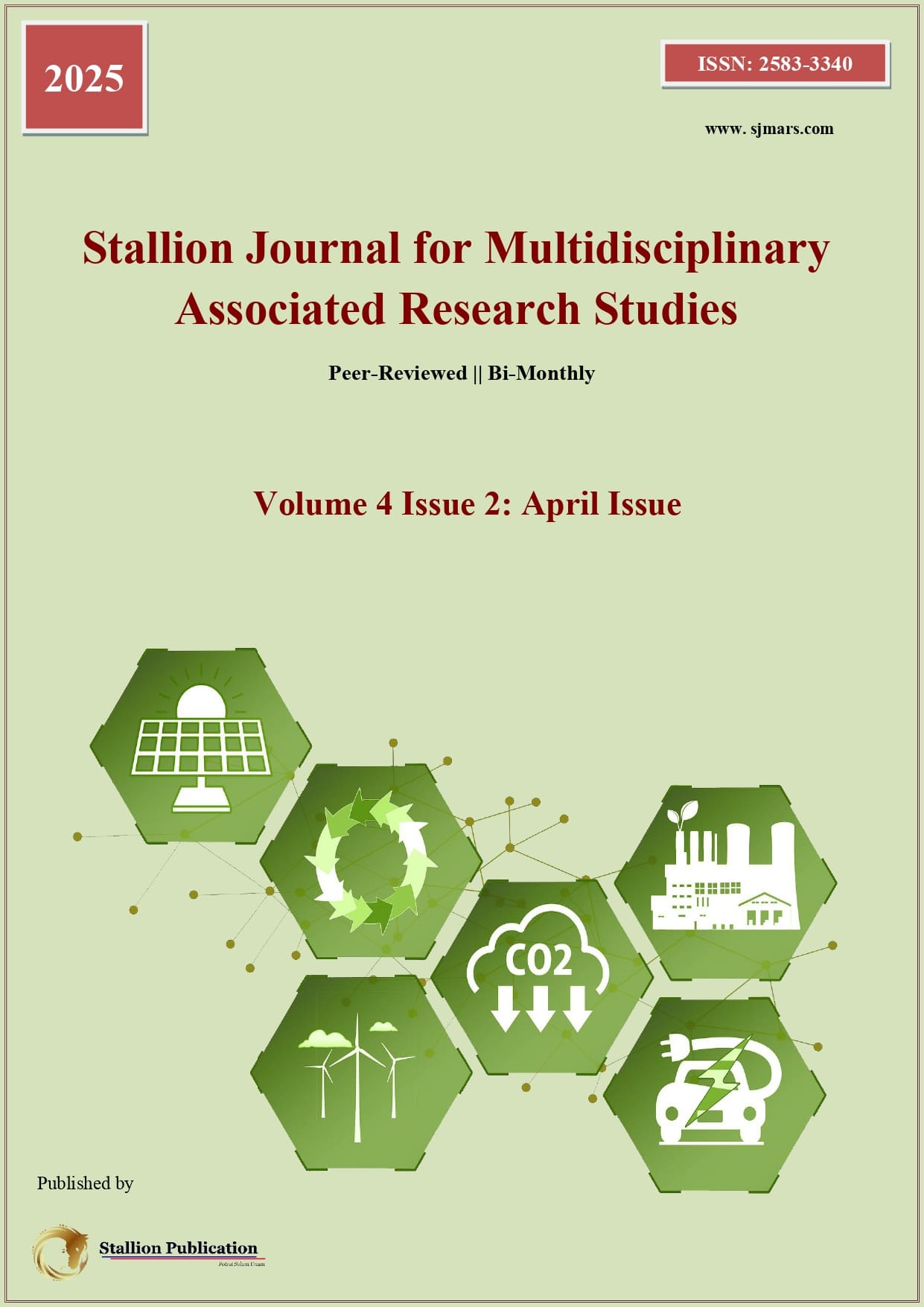The Case for an Integrated Healthcare Regulatory Authority in Assam: Enhancing Quality and Standardization in Private Healthcare Establishments
DOI:
https://doi.org/10.55544/sjmars.4.2.6Keywords:
Healthcare Regulation, Private Healthcare, Quality Assurance, Clinical Establishments, Regulatory Integration, Healthcare Policy, Assam, Public Health Administration, Health Systems Strengthening, Patient SafetyAbstract
Background: The private healthcare sector in Assam has expanded substantially in recent decades, yet regulatory oversight remains fragmented across multiple authorities with overlapping jurisdictions. This fragmentation has led to inconsistent quality standards, enforcement challenges, and suboptimal patient outcomes. This paper examines the limitations of the current regulatory framework and proposes the establishment of a unified Healthcare Regulatory Authority to comprehensively oversee private healthcare establishments including hospitals, nursing homes, clinics, diagnostic centers, and pharmacies.
Methods: This study employed a mixed-methods approach combining: (1) systematic review of existing regulatory frameworks in Assam and successful models from other Indian states (n=6); (2) analysis of compliance data from 423 private healthcare establishments across all 33 districts of Assam; (3) structured interviews with 57 key stakeholders representing diverse perspectives; and (4) comparative quality assessment across differently regulated facilities using standardized tools adapted from NABH and NABL frameworks. Gap analysis methodology was used to identify regulatory deficiencies and their impact on healthcare quality. Statistical analyses included descriptive statistics, comparative analyses, correlation analyses, and multiple regression modeling to establish relationships between regulatory approaches and quality metrics.
Results: The current regulatory landscape in Assam is characterized by jurisdictional ambiguity (overlap score: 0.76), inconsistent standards application (standardization gap: 0.82), limited enforcement capacity (compliance rate: 46.8%), and significant quality variations across facilities (quality standard deviation: 28.7%). Facilities under fragmented oversight demonstrated significantly lower quality scores (mean difference: 18.4 points, p<0.001) compared to those with integrated oversight. Multiple regression analysis identified regulatory fragmentation as a significant predictor of poor quality outcomes (standardized β=-0.38, p<0.001). Stakeholder interviews revealed strong support (87.3%) for a unified regulatory authority with comprehensive jurisdiction, citing reduced regulatory burden, enhanced quality standardization, improved accountability, and streamlined compliance processes as anticipated benefits.
Conclusion: This study presents compelling evidence for establishing an Assam Healthcare Regulatory Authority (AHRA) as a centralized body to oversee registration, standardization, and quality assurance across all private healthcare establishments. The proposed authority would provide unified licensing, standardized protocols, centralized monitoring, and transparent enforcement mechanisms to enhance healthcare quality while reducing regulatory burden. Implementation would require comprehensive enabling legislation, phased integration of existing authorities, significant capacity development, sustained stakeholder engagement, and evidence-based policy formulation. This integrated approach aligns with successful models from other Indian states that have demonstrated substantial improvements in healthcare quality, compliance rates, and operational efficiency.
References
[1] Agarwal, R., Mishra, S., & Kumar, A. (2023). Integrated healthcare regulatory frameworks in India: A comparative analysis of state-level approaches and outcomes. Indian Journal of Medical Ethics, 8(2), 112-124. https://doi.org/10.20529/IJME.2023.021
[2] Ayres, I., & Braithwaite, J. (1992). Responsive Regulation: Transcending the Deregulation Debate. Oxford University Press.
[3] Bora, N., & Ahmed, K. (2021). Regulatory challenges in Assam's expanding private healthcare sector: Implications for quality and access. Journal of Health Systems, 6(1), 42-58. https://doi.org/10.1080/jhs.2021.1876234
[4] Braun, V., & Clarke, V. (2006). Using thematic analysis in psychology. Qualitative Research in Psychology, 3(2), 77-101. https://doi.org/10.1191/1478088706qp063oa
[5] Choudhury, S., & Das, P. (2022). Healthcare regulation in Northeast India: Gaps, challenges and opportunities. Northeast Journal of Healthcare Management, 4(2), 87-103. https://doi.org/10.1080/njhm.2022.1943216
[6] Creswell, J. W., & Plano Clark, V. L. (2018). Designing and conducting mixed methods research (3rd ed.). Sage Publications.
[7] Das, M., & Goswami, B. (2021). Quality variations in private healthcare in Assam: The role of regulatory frameworks. Indian Journal of Public Health, 65(3), 276-283. https://doi.org/10.4103/ijph.IJPH_732_20
[8] Directorate of Economics and Statistics Assam. (2023). Statistical Handbook of Assam 2022-23. Government of Assam.
[9] Directorate of Health Services Assam. (2022). Annual Report on Private Healthcare Sector in Assam 2021-22. Government of Assam. Retrieved from https://dhs.assam.gov.in/reports/annual_report_2021_22
[10] Government of Assam. (2018). Notification on Implementation of Clinical Establishments Act in Assam. Health & Family Welfare Department. Retrieved from https://hfw.assam.gov.in/notifications/cea_implementation
[11] Hancher, L., & Moran, M. (1989). Organizing regulatory space. In L. Hancher & M. Moran (Eds.), Capitalism, Culture and Economic Regulation (pp. 271-299). Oxford University Press.
[12] Hussain, M. (2020). Healthcare regulation in resource-constrained settings: Challenges and opportunities in Assam. Journal of Health Policy and Planning, 35(2), 163-175. https://doi.org/10.1093/heapol/czaa024
[13] Karnataka Health Authority. (2022). Annual Performance Report 2021-22. Government of Karnataka.
[14] Kumar, A., & Patel, V. (2022). Integrated healthcare regulatory systems in Indian states: Comparative analysis of models, implementation, and outcomes. Health Policy and Planning, 37(5), 591-603. https://doi.org/10.1093/heapol/czab154
[15] Nandraj, S. (2019). Regulating healthcare: Challenges and responses in the private healthcare sector in India. Indian Journal of Medical Ethics, 4(3), 215-223. https://doi.org/10.20529/IJME.2019.043
[16] Sharma, D., Kalita, J., & Rahman, H. (2020). Regulatory framework for private healthcare establishments in Assam: Current status and future directions. Indian Journal of Community Medicine, 45(2), 134-141. https://doi.org/10.4103/ijcm.IJCM_276_19
[17] Tamil Nadu Health Systems Project. (2022). Evaluation of the Tamil Nadu Clinical Establishments Regulatory Framework: Impact Assessment Report. Government of Tamil Nadu.
[18] Walt, G., & Gilson, L. (1994). Reforming the health sector in developing countries: The central role of policy analysis. Health Policy and Planning, 9(4), 353-370. https://doi.org/10.1093/heapol/9.4.353
[19] World Health Organization. (2018). Handbook for National Quality Policy and Strategy: A Practical Approach for Developing Policy and Strategy to Improve Quality of Care. World Health Organization.
[20] World Health Organization. (2021). Quality and Safety in Healthcare: Regulatory Frameworks for Low and Middle-Income Countries. WHO Regional Office for South-East Asia. Retrieved from https://www.who.int/southeastasia/publications/quality-safety-healthcare-regulatory-frameworks
Downloads
Published
How to Cite
Issue
Section
License
Copyright (c) 2025 Stallion Journal for Multidisciplinary Associated Research Studies

This work is licensed under a Creative Commons Attribution-NonCommercial-NoDerivatives 4.0 International License.






